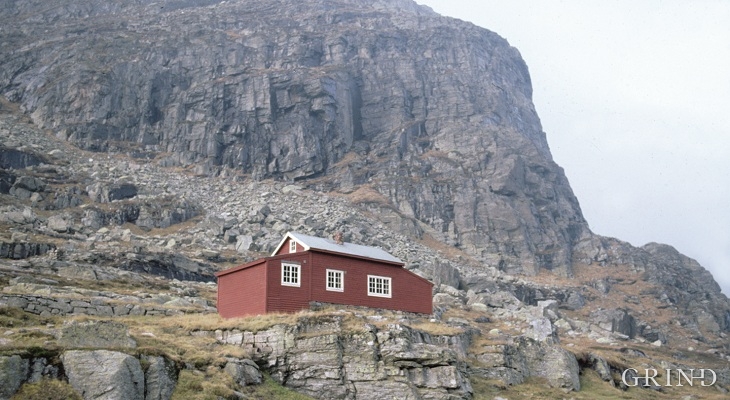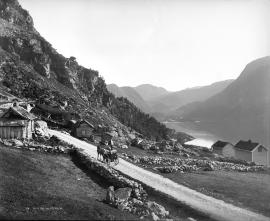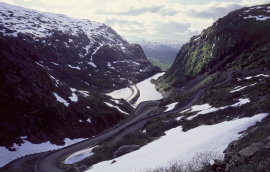The new road was opened in 1865; along the vertical mountainside on the east side of Sandvinvatnet (lake), through the waterfall landscape in the Odda valley, up the hairpin bends in Seljestadjuvet, across Røldal mountain, up Austmannalia and Tarjebudalen, in front of Svandalsflona and Midtlæger, through Dyrskard and across Ulevå to Telemark. Only in 1887 was the road completed down to Dalen. In the summer this was both an attractive and comfortable travelling route between East Norway and West Norway; important for the development of tourism. Today’s road still largely follows the same route. At Dyrskard, the highest point of the route, lies the old construction hut. This was also used by those who cleared the road in the spring, a slow and heavy work. A common technique was to “bait” the snow by throwing earth on top of it to make it melt more quickly. Hordaland road administration has restored the hut – a small, but important cultural monument in this exposed mountain pass. The name Dyrskard is probably from prehistoric times; in this case dyr (animals) means reindeer; as now, this was the most important trek for the reindeer flocks between Hardangervidda and Suldalsheiene.
Published: 27.02.2013 | Author: Nils Georg Brekke, Nils Nonås, Harald Jordal
Dyrskard with the restored construction hut. (Helge Sunde).
Right from the start the road across Haukelifjell was a road from “fjord to fjord”, from the bottom of Sørfjorden to Dalen in Telemark. The connection between Røldal-Haukelifjell was considered so important by Stortinget (Parliament) that the road construction Odda-Dalen was approved already in 1853.





